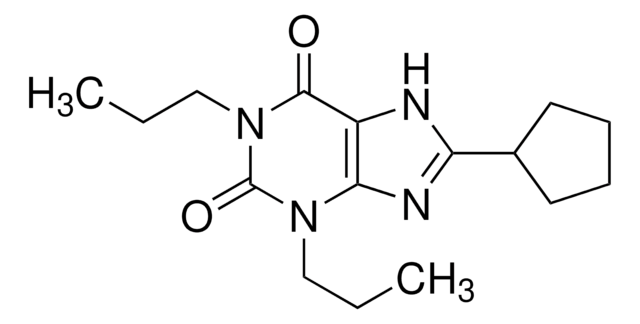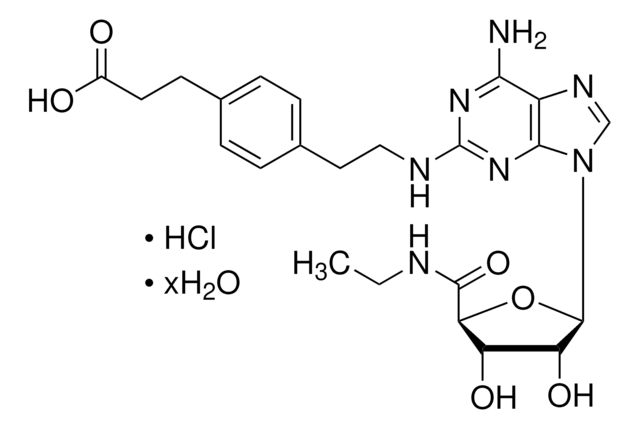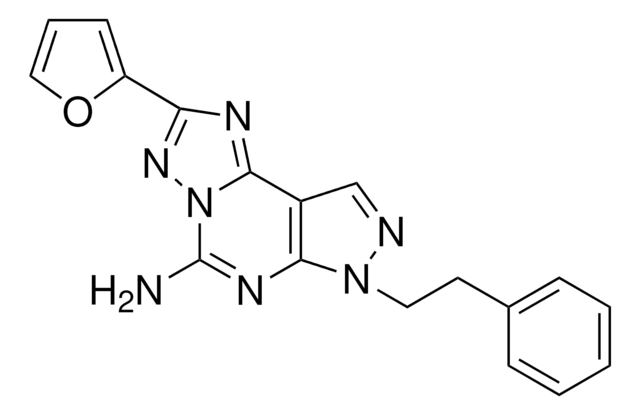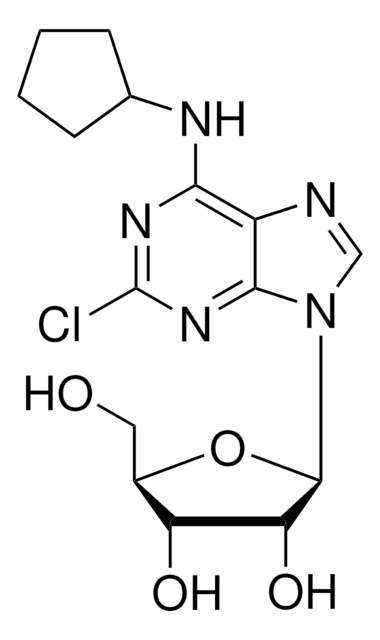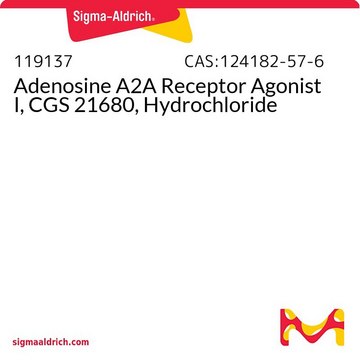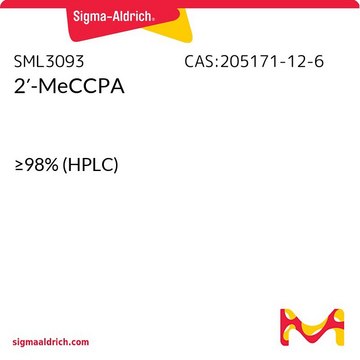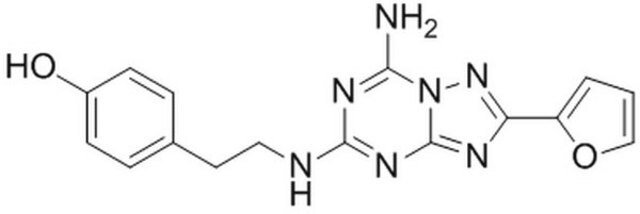Kluczowe dokumenty
D134
3,7-Dimethyl-1-propargylxanthine
≥98% (HPLC), powder
Synonim(y):
3,7-Dimethyl-1-(2-propynyl)xanthine, DMPX
About This Item
Polecane produkty
Poziom jakości
Próba
≥98% (HPLC)
Formularz
powder
kolor
white to beige
rozpuszczalność
DMSO: 15 mg/mL, clear
ciąg SMILES
CN1C(=O)N(CC#C)C(=O)c2c1ncn2C
InChI
1S/C10H10N4O2/c1-4-5-14-9(15)7-8(11-6-12(7)2)13(3)10(14)16/h1,6H,5H2,2-3H3
Klucz InChI
IORPOFJLSIHJOG-UHFFFAOYSA-N
informacje o genach
human ... ADORA2A(135) , ADORA2B(136)
rat ... Adora1(29290) , Adora2a(25369)
Szukasz podobnych produktów? Odwiedź Przewodnik dotyczący porównywania produktów
Zastosowanie
- to study its effects on potential modulation of motor output elicited by epidural spinal stimulation (ESS)
- to study the role of A2a receptor in elevating cyclic adenosine monophosphate (cAMP) levels
- to study its effects on the cell viability of human gastric cancer cell line
Działania biochem./fizjol.
Hasło ostrzegawcze
Warning
Zwroty wskazujące rodzaj zagrożenia
Zwroty wskazujące środki ostrożności
Klasyfikacja zagrożeń
Eye Irrit. 2 - Skin Irrit. 2 - STOT SE 3
Organy docelowe
Respiratory system
Kod klasy składowania
11 - Combustible Solids
Klasa zagrożenia wodnego (WGK)
WGK 3
Środki ochrony indywidualnej
dust mask type N95 (US), Eyeshields, Gloves
Wybierz jedną z najnowszych wersji:
Masz już ten produkt?
Dokumenty związane z niedawno zakupionymi produktami zostały zamieszczone w Bibliotece dokumentów.
Nasz zespół naukowców ma doświadczenie we wszystkich obszarach badań, w tym w naukach przyrodniczych, materiałoznawstwie, syntezie chemicznej, chromatografii, analityce i wielu innych dziedzinach.
Skontaktuj się z zespołem ds. pomocy technicznej